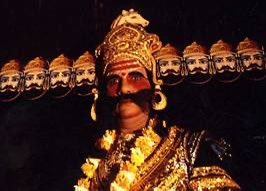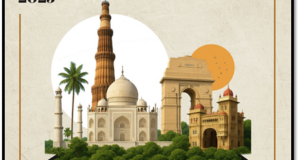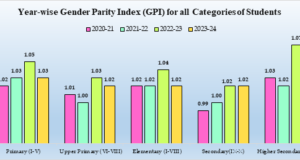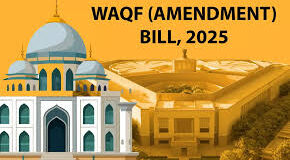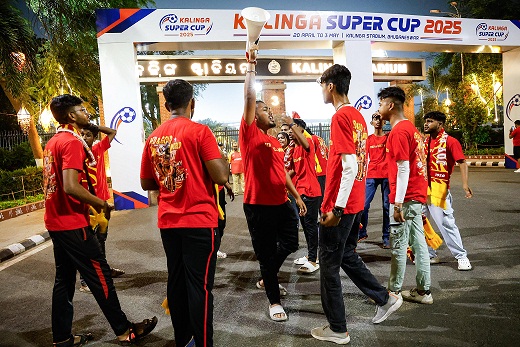The term ‘cultural heritage’ has changed content considerably in recent decades, partially owing to the instruments developed by UNESCO. Cultural heritage does not end at monuments and collections of objects. It also includes traditions or living expressions inherited from our ancestors and passed on to our descendants, such as oral traditions, performing arts, social practices, rituals, festive events, knowledge and practices concerning nature and the universe or the knowledge and skills to produce traditional crafts.
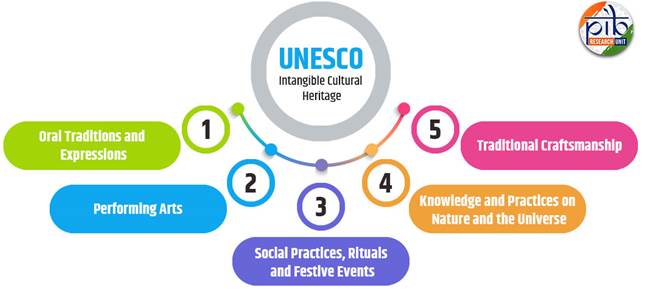
While fragile, intangible cultural heritage is an important factor in maintaining cultural diversity in the face of growing globalization. An understanding of the intangible cultural heritage of different communities helps with intercultural dialogue, and encourages mutual respect for other ways of life.
The importance of intangible cultural heritage is not the cultural manifestation itself but rather the wealth of knowledge and skills that is transmitted through it from one generation to the next. The social and economic value of this transmission of knowledge is relevant for minority groups and for mainstream social groups within a State and is as important for developing States as for developed ones.
The Intergovernmental Committee for the Safeguarding of the Intangible Cultural Heritage guides best practices and makes recommendations on measures for the safeguarding of intangible cultural heritage. The Committee is also in charge of granting international assistance. The Committee examines requests submitted by States Parties for the inscription of intangible heritage on the Lists as well as proposals for programs and projects. The Committee meets annually to evaluate nominations proposed by States Parties to the 2003 Convention and decide whether or not to inscribe those cultural practices and expressions of intangible heritage on the Convention’s Lists.
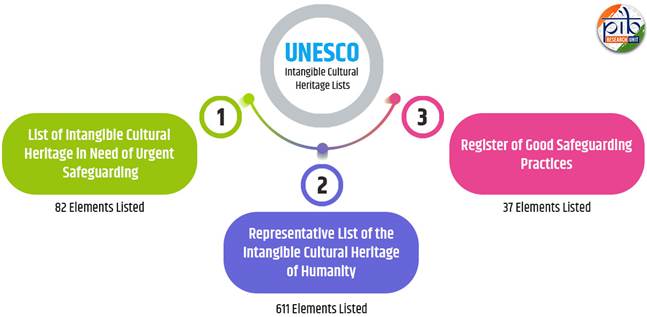
So far, 730 elements corresponding to 5 regions and 145 countries have been listed as Intangible Cultural Heritage. India has 14 elements included in this prestigious list, all of which are part of the Representative List of the Intangible Cultural Heritage of Humanity.
Garba of Gujarat
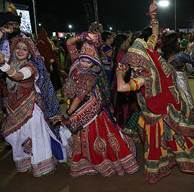
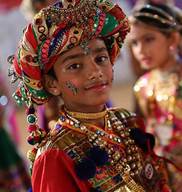
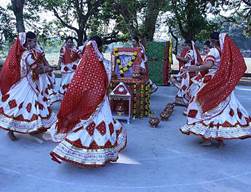
Year: 2023
Main Concept: Dance, Ritual, Vocal Music
Garba is a traditional dance performed during the Hindu festival of Navaratri, worshiping feminine energy or ‘Shakti’. Dancers encircle a lit earthenware pot or an image of the goddess Amba, moving counter-clockwise with simple steps, clapping and singing in unison. Garba involves diverse participants such as dancers, musicians, craftspeople, and religious figures, fostering inclusivity across socio-economic and religious divides. Transmitted across generations through practice and observation, Garba also benefits from institutional support including workshops and courses in various related arts, further enriching its cultural significance and community bonds.
Durga Puja in Kolkata
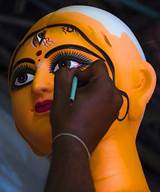
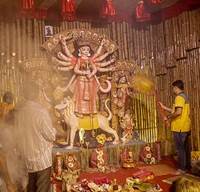
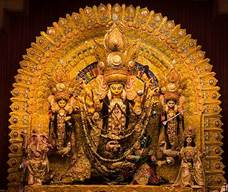
Year : 2021
Main Concept: Handicrafts, Sculpture
Durga Puja is an annual festival celebrated primarily in Kolkata and other parts of India, dedicated to the worship of goddess Durga over ten days in September or October. Artisans sculpt clay images of Durga and her family months before the festival using river clay, which are then brought to life with painted eyes on the inaugural day of Mahalaya. The festival culminates with the immersion of these images in the Ganga River, symbolizing a return to one’s roots. Durga Puja is renowned for its blend of religion and art, featuring elaborate installations, traditional drumming, and widespread community participation that bridges social divides of class, religion, and ethnicity.
Kumbh Mela
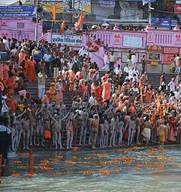
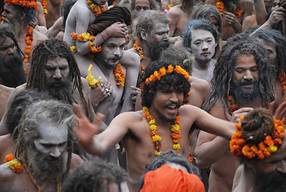
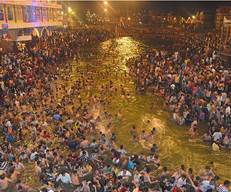
Year: 2017
Main Concept: Pilgrimages. Religious Practice, Sacred Sites
Kumbh Mela, the largest peaceful gathering of pilgrims globally, sees millions bathing in sacred rivers like the Ganges to cleanse themselves of sins and attain spiritual liberation. Held every four years in Allahabad, Haridwar, Ujjain, and Nasik, the festival attracts people from all walks of life, including ascetics, saints, and visitors, regardless of caste or creed. It combines astronomy, astrology, spirituality, and rich cultural traditions, imparted through ancient manuscripts, oral traditions, and the mentorship of sadhus in ashrams and akhadas. Kumbh Mela serves as a profound spiritual and cultural event, deeply influencing Indian society and showcasing its diversity.
Nowruz
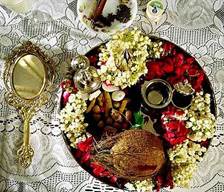
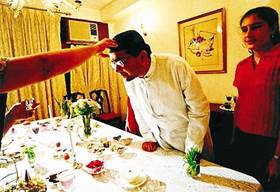
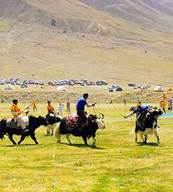
Year: 2016
Main Concept: Festivals, New Year, Prosperity Ritual
March 21 marks the start of the year in Afghanistan, Azerbaijan, India, Iran (Islamic Republic of), Iraq, Kazakhstan, Kyrgyzstan, Pakistan, Tajikistan, Turkey, Turkmenistan and Uzbekistan. It is referred to as Nowruz or Navroz in India, meaning ‘new day’ when a variety of rituals, ceremonies, and other cultural events take place for about two weeks. Families gather around a decorated table symbolizing purity and prosperity to share special meals. People wear new clothes, visit relatives, especially elders, and exchange gifts, often handmade by artisans. The festivities include music and dance performances, traditional sports, and the making of handicrafts, fostering cultural diversity and community solidarity. These traditions are passed down through generations, promoting tolerance and peace through active participation and observation.
Yoga
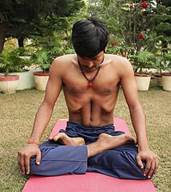
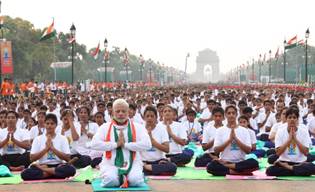
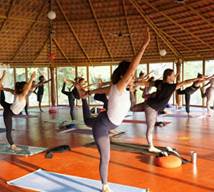
Year: 2016
Main Concept: Mind, Physical Education, Spiritual Knowledge
The philosophy of yoga, rooted in ancient Indian traditions, profoundly influences various aspects of society including health, education, and the arts. Yoga integrates mind, body, and soul through poses, meditation, controlled breathing, and chanting, promoting mental, spiritual, and physical well-being. Practiced by people of all ages and backgrounds, yoga transcends gender, class, and religion, gaining popularity worldwide. Traditional transmission through the Guru-Shishya model continues in ashrams, schools, universities, and online platforms, supported by ancient manuscripts and modern literature, enriching its practice and teaching.
Sankirtana, ritual singing, drumming, and dancing of Manipur
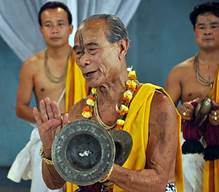
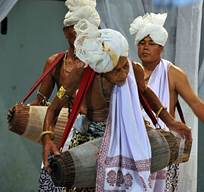
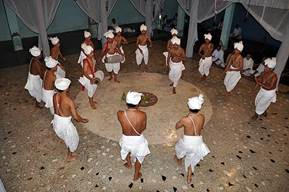
Year: 2013
Main Concept: Dance, Rituals, Vocal Music
Sankirtana is a vibrant tradition among the Vaishnava community in the Manipur plains, involving song and dance performances that narrate the life of Krishna. Typically held in temples or courtyards with two drummers and about ten singer-dancers, these performances evoke deep religious and aesthetic sentiments, often moving spectators to tears or reverence. Sankirtana serves dual roles: it unites the community during festive occasions and strengthens social bonds through life-cycle ceremonies. This practice is integral to Manipuri culture, emphasizing community participation and the transmission of knowledge from mentors to disciples, while maintaining harmony with the natural world through its rituals.
Buddhist chanting of Ladakh: Recitation of Sacred Buddhist texts in the trans-Himalayan Ladakh Region
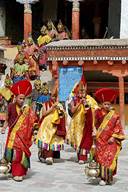
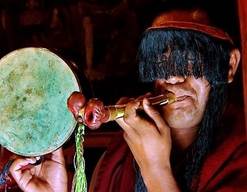
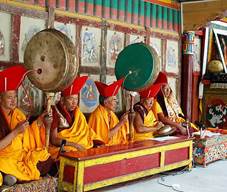
Year: 2012
Main Concept: Buddhism, Religious Practice, Vocal Music
In Ladakh, Buddhist lamas perform sacred chanting rooted in Mahayana and Vajrayana traditions, practiced across four major sects: Nyngma, Kagyud, Shakya, and Geluk. Chanting serves spiritual and moral purposes, performed during life-cycle rituals and important Buddhist and agrarian events. Chants are conducted in groups, accompanied by symbolic gestures (mudras) and traditional instruments like bells and drums. Acolytes undergo rigorous training under senior monks, memorizing texts through frequent recitation. These daily chants in monastery halls are prayers for world peace and personal spiritual growth.
Chhau Dance
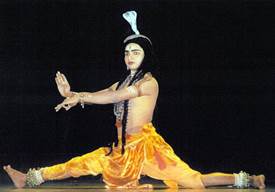
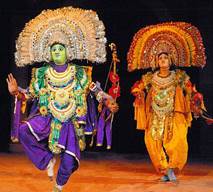
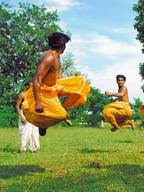
Year : 2010
Main Concept: Acrobats, Dance, Hinduism, Representative Literary Works
Chhau dance, originating from eastern India, encompasses narratives from epics, folklore, and abstract themes, distinguished by styles from Seraikella, Purulia, and Mayurbhanj. It incorporates mock combat, bird and animal movements, and village household gestures, taught primarily to male dancers from traditional artist families or local communities. Performed at night with traditional music including reed pipes and drums, Chhau plays a vital role in local festivals and cultural identity, yet faces challenges from modernization and economic pressures that threaten community participation and heritage preservation.
Kalbelia Folk Songs and Dances of Rajasthan
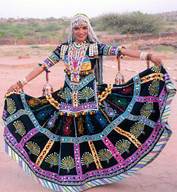
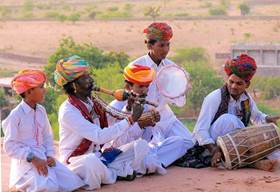
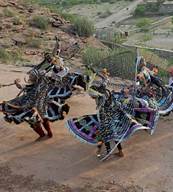
Year: 2010
Main Concept: Dance, Intrumental Music, Vocal Music
Kalbelia songs and dances, once practiced by snake handlers, now celebrate their cultural heritage through music and movement. Women adorned in black skirts emulate serpentine motions while men play traditional instruments like the khanjari and poongi. These performances, rich with mythological narratives and improvisational poetry, are integral to Kalbelia’s identity, conveying stories and traditions orally across generations amidst societal changes and challenges to their traditional lifestyle.
Mudiyettu, Ritual Theatre and Dance Drama of Kerala
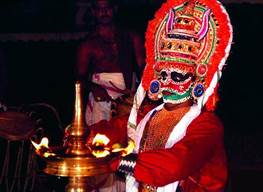
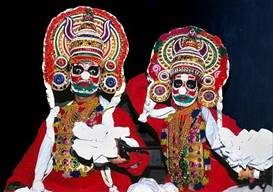
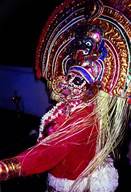
Year: 2010
Main Concept: Dance, Religious Practice, Theatre
Mudiyettu is a ritual dance drama from Kerala depicting the battle between goddess Kali and the demon Darika, involving the entire village community. Performers purify themselves through fasting and prayer before invoking the goddess within a large, ritualistic drawing called kalam. Held annually at Bhagavati Kavus temples across different villages, Mudiyettu fosters cooperation and community bonding while transmitting cultural values and traditions from elders to younger generations.
Ramman, Religious Festival and Ritual Theatre of the Garhwal Himalayas
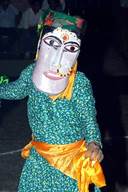
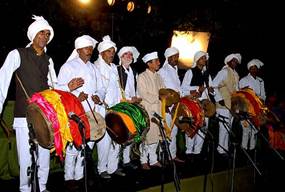
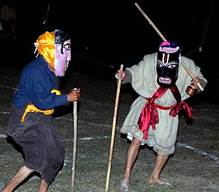
Year: 2009
Main Concept: Festivals, Hinduism, Theatre
Ramman is an annual religious festival held in late April in Saloor-Dungra, Uttarakhand, dedicated to Bhumiyal Devta, a local deity. The festival features complex rituals including recitations of the epic of Rama, legends, songs, and masked dances. Organized by villagers, each caste and occupational group plays a distinct role, with Brahmans leading prayers and rituals, and Bhandaris wearing sacred masks like that of Narasimha. Ramman combines theatre, music, and historical narratives, reflecting the community’s environmental, spiritual, and cultural ethos, and reinforcing its identity through mythological tales. Efforts are underway to preserve and promote Ramman beyond its local context to ensure its cultural continuity and broader recognition.
Kutiyattam, Sanskrit Theatre
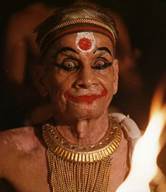
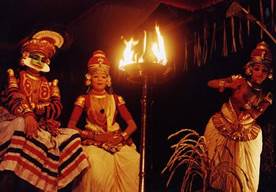
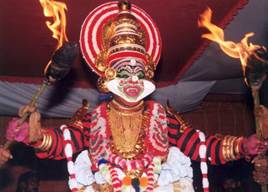
Year: 2008
Main Concept: Dance, Religious Art, Theatre
Kutiyattam, Sanskrit theatre, which is practiced in the province of Kerala, is one of India’s oldest living theatrical traditions, originating more than 2,000 years ago. It emphasizes meticulous eye expressions and gestures to convey characters’ thoughts and emotions. Actors undergo rigorous training lasting up to fifteen years, mastering intricate breathing techniques and muscle control. Traditionally staged in temple theatres with sacred rituals, Kutiyattam has faced challenges due to historical shifts in patronage, leading to recent funding crises. Efforts are underway among various stakeholders to preserve and sustain this cultural treasure amidst modern challenges.
Ramlila, The Traditional Performance of the Ramayana
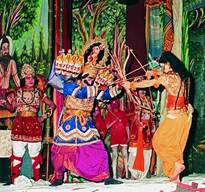 s
s 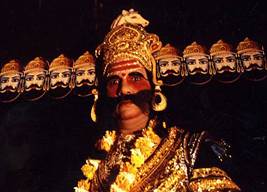
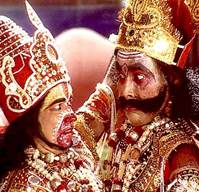
Year: 2008
Main Concept: Epic Poetry, Theatre
Ramlila, a traditional performance of the Ramayana epic, takes place across northern India during the Dussehra festival. Based on the Ramacharitmanas, composed by Tulsidas in the 16th century, Ramlilas span ten to twelve days in most places but can extend to a month in places like Ramnagar. These performances narrate episodes from the Ramayana, celebrating Rama’s return from exile and depicting his battle with Ravana. Despite its cultural significance in uniting communities regardless of caste or religion, Ramlila faces declining attendance due to the popularity of television dramas. Efforts are needed to preserve and promote this cultural tradition amidst modern challenges.
Tradition of Vedic Chanting
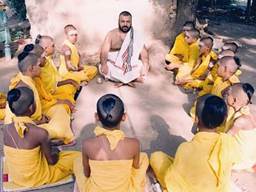
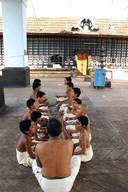
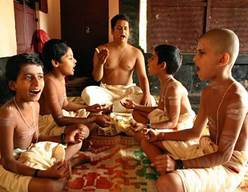
Year: 2008
Main Concept: Oral Tradition, Religious Belief, Vocal Music,
Representative Literary Works,
The Vedas, composed by Aryans over 3,500 years ago, are foundational texts in Hinduism, revered for their philosophical depth, rituals, and hymns. Comprising four main texts—the Rig Veda, Sama Veda, Yajur Veda, and Atharva Veda—they were traditionally chanted during rituals and daily life in Vedic communities. These texts provide insights into early Hindu history, artistic and scientific concepts, and the development of classical Sanskrit. Despite their enduring cultural significance, only thirteen of the original over one thousand Vedic recitation branches survive today, with several schools facing the risk of extinction. Efforts are ongoing to preserve this ancient oral tradition amidst contemporary challenges.
In conclusion, these living expressions, passed down through generations, play a vital role in fostering intercultural dialogue and mutual respect among communities worldwide. Recognizing and safeguarding intangible cultural heritage not only preserves cultural identity but also promotes social cohesion and sustainable development. Through initiatives like UNESCO’s Intangible Cultural Heritage Lists, nations collaborate to protect and celebrate these invaluable aspects of human heritage, ensuring their continuation for future generations.
References
- https://ich.unesco.org/en/functions-00586
- https://ich.unesco.org/en/lists
- https://whc.unesco.org/en/faq/40#:~:text=Intangible%20cultural%20heritage%20is%20the,part%20of%20their%20cultural%20heritage.
- https://ich.unesco.org/en/what-is-intangible-heritage-00003
- https://ich.unesco.org/en/dive?display=domain#tabs
- https://ich.unesco.org/en/RL/garba-of-gujarat-01962
- https://ich.unesco.org/en/RL/durga-puja-in-kolkata-00703
- https://ich.unesco.org/en/RL/kumbh-mela-01258
- https://ich.unesco.org/en/RL/nawrouz-novruz-nowrouz-nowrouz-nawrouz-nauryz-nooruz-nowruz-navruz-nevruz-nowruz-navruz-01161
- https://ich.unesco.org/en/RL/yoga-01163
- https://ich.unesco.org/en/RL/sankirtana-ritual-singing-drumming-and-dancing-of-manipur-00843
- https://ich.unesco.org/en/RL/buddhist-chanting-of-ladakh-recitation-of-sacred-buddhist-texts-in-the-trans-himalayan-ladakh-region-jammu-and-kashmir-india-00839
- https://ich.unesco.org/en/RL/chhau-dance-00337
- https://ich.unesco.org/en/RL/kalbelia-folk-songs-and-dances-of-rajasthan-00340
- https://ich.unesco.org/en/RL/mudiyettu-ritual-theatre-and-dance-drama-of-kerala-00345
- https://ich.unesco.org/en/RL/ramman-religious-festival-and-ritual-theatre-of-the-garhwal-himalayas-india-00281
- https://ich.unesco.org/en/RL/kutiyattam-sanskrit-theatre-00010
- https://ich.unesco.org/en/RL/ramlila-the-traditional-performance-of-the-ramayana-00110
- https://ich.unesco.org/en/RL/tradition-of-vedic-chanting-00062
 Odisha news today, Latest Oriya News Bhubaneswar Online Odia news Portal
Odisha news today, Latest Oriya News Bhubaneswar Online Odia news Portal
